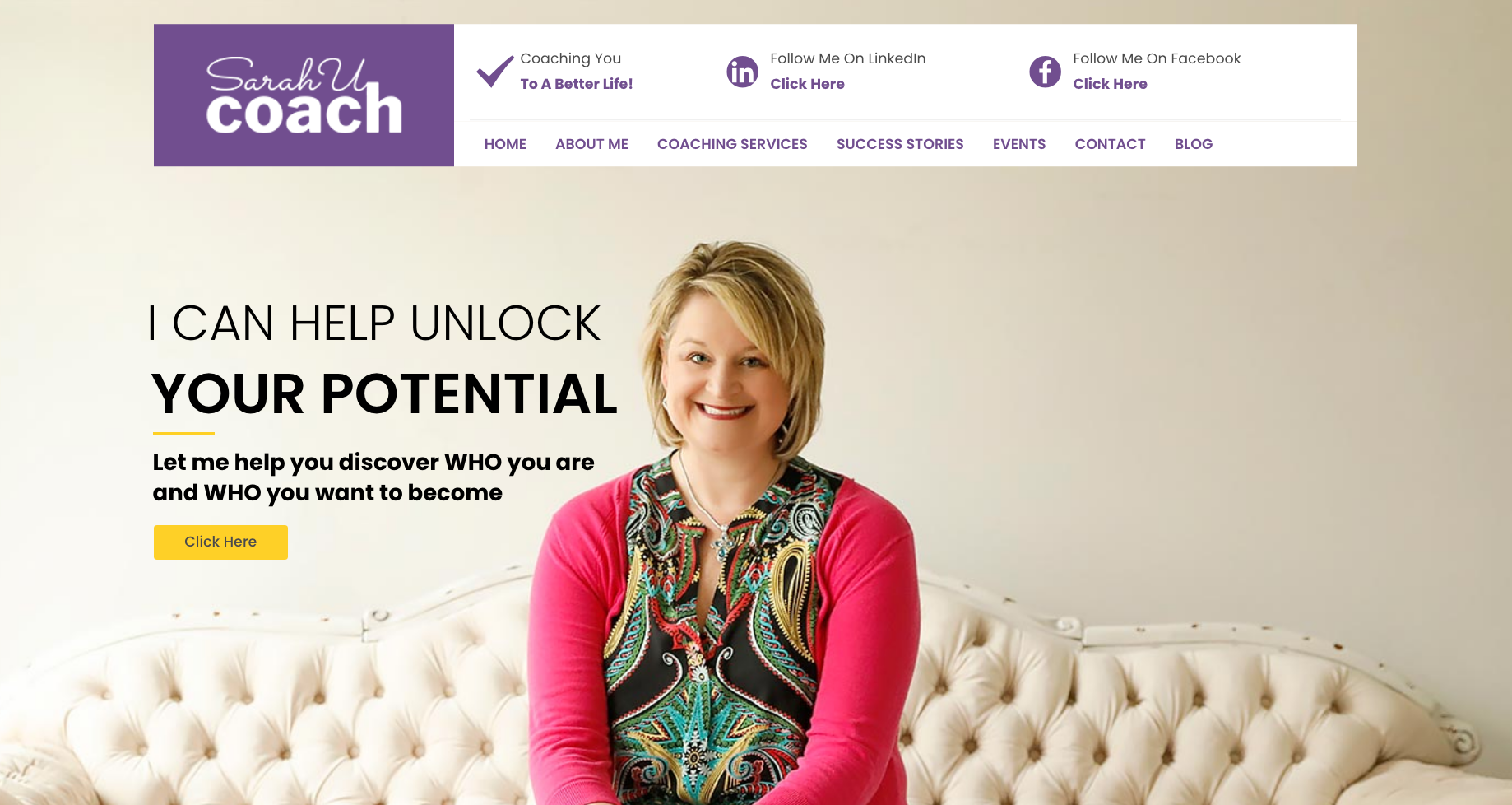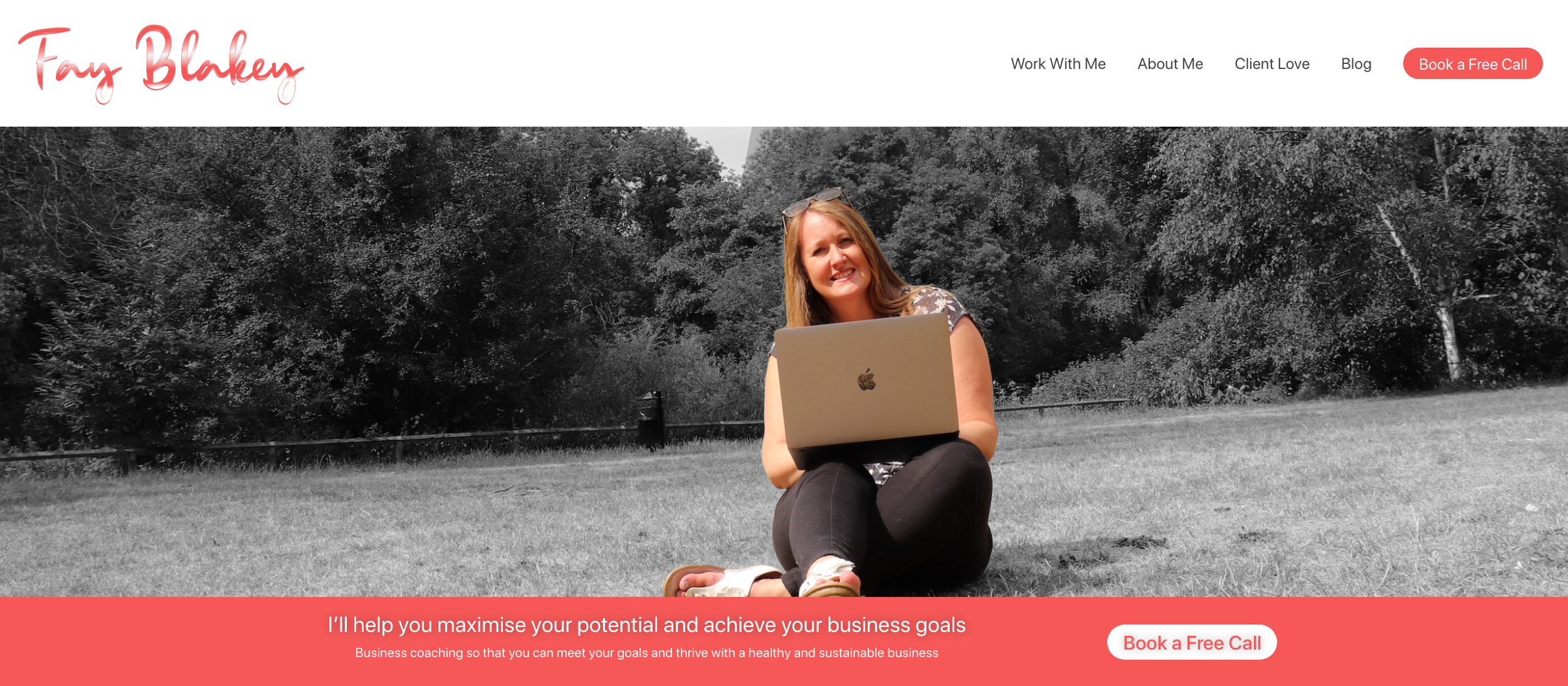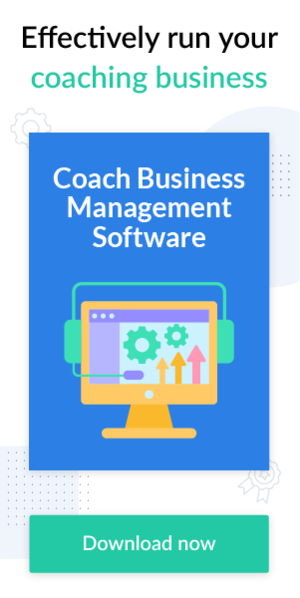When starting a business in the competitive coaching market, you want to cut through the noise and set your business apart to show your potential clients why they should work with you. To get noticed and remembered, attract the right people to your business, and stand out from your competition, you need a well-established unique selling proposition (USP). From this blog post, you’ll learn what a USP is, why you need it, and how to create one. Read on.
What is a USP and why do you need it?
Differentiation is one of the most important strategic and tactical activities that companies need to constantly engage.
A USP, or a unique selling proposition (also known as a unique selling point) is used by businesses to communicate why their potential clients should buy from them, not their competitors. It’s a statement summarizing the most valuable differentiators of your brand.
Most of your potential clients will likely struggle to decide whose coaching services to choose. This choice can be daunting when clients face an overabundance of opportunities. It’s your job to help your potential clients make a decision.
Being focused on your clients’ needs and offering unique services enables you to disrupt the market, win a loyal audience, and retain your clients. That’s why it’s crucial to formulate your USP from your client’s perspective. As a coach, you may have an amazing offer. But failing to achieve the desired impact with your USP will result in your business losing clients and revenue.
There are several reasons why you need to craft your USP:
- To communicate a clear benefit to your clients
- To make your brand recognizable
- To win a loyal audience
- To bolster your revenue

7 steps to your killer USP
Although a USP is just one phrase, it takes some effort to create one that will help you attract clients. Here’s a step-by-step guide to creating your USP.
Step 1. Find out what your clients want
To craft a winning unique selling proposition, you need to know who exactly you’re targeting. At this step, you want to be as specific as possible. Take your ideal coaching client profile as a basis. There’s no good in trying to please each and every client who might look for a coaching service like yours.
The old adage if you try to please everybody, you’ll end up pleasing no one rings true for marketing your services. Think about a core group of people who would benefit from your services most and make a list of what they value most about the type of coaching services you provide.
If you don’t know what your ideal client profile is and how to develop one, read our step-by-step guide to creating your ideal coaching client profile.
Step 2. Research your competitors
Before you determine what’s unique about your services, do competitor research to see what’s available to your potential clients and understand how you can differentiate yourself.
Start by listing the top five coaches in your niche and check what they do well and what their clients appreciate. Visit their websites and social media profiles and study their clients’ feedback. Look at their online and offline ads and market positioning. Subscribe to their newsletters to see what content they offer. Identify pain points they address and benefits they offer, and focus on what language they use to communicate with their target clients and promote their services.
Make some notes to visualize these coaches’ strong and weak points. Then analyze whether your competitors satisfy their clients’ biggest needs and think whether you’re able to meet those same needs.
Step 3. Define your strengths
At this point, you want to identify what makes your coaching services unique. Here’s a list of questions to rely on while doing this:
- What is your potential client looking for?
- What is the #1 problem they’re struggling with?
- How does your service solve their problem?
- How are your services better than your competitors’?
- What do your competitors do and what don’t they do?
- Why would your customer choose your service over the competition?
Using all this information, think about what makes your coaching services unique. Find out something none of your competitors offers and that resonates with your target clients’ needs.
Step 4. List your differentiators
Once you’re ready with the list of what your competition offers and lacks and what your potential coaching clients seek, think about what you can offer in order to stand out from the crowd. At this step, list three to five of the most significant benefits a client can get from choosing to work with you. These should be things they can’t get from other coaches (i.e. what sets you apart from your competition). Avoid using meaningless words when highlighting your benefits (best/cheapest alternative, etc.).
Step 5. Define your promise
Now that you have all the necessary information from steps one through four, combine it all into one short paragraph. Revise it to cut any repeated ideas and thoughts. Make sure your description is as clear and as specific as possible.
You can use the following template to write your brand’s promise. Feel free to switch the template up for your promise to sound harmonious, but ensure you involve each of the elements.

If someone asks you about your coaching business, you can use this paragraph as a snappy way to explain what services you provide. Thinking of your services in this way enables you to focus on your ideal customer and identify their problems with your USP.
It’s highly important that you understand you aren’t competing with other coaches. You’re offering something unique instead, i.e. no one in the market offers what you offer.
Step 6. Craft your USP
It’s common knowledge that you have three seconds to grab the attention of potential customers. Your unique selling proposition should be concise so it can be perceived by your clients within this time. To craft your USP, shorten the paragraph you wrote in step five into one powerful sentence.
Those who see your USP for the first time should understand what services you provide and for whom and what makes them unique compared to your competitors’. You want your final USP to be as simple, short, specific, and catchy as possible. Craft several versions of your USP and then choose the one that best reflects your differentiators.
Don’t rush, and take your time to create a ferociously compelling USP that will lead to conversions and purchases.
Step 7. Communicate your USP
Once you’ve crafted your perfect USP, it’s time to use it across all possible marketing channels through which your target clients can connect with you. Here’s a list of the places you can communicate your USP to your potential clients.
- Website pages
- Landing pages
- Email signatures
- Social media bios
- Leaflets/brochures
- Business cards
- Video thumbnails/descriptions
- SMS marketing
- Ad banners
- Mobile apps
- Display advertising
- Marketing kits
Top 7 tips for a perfect USP
Now that you’re ready with your USP, validate it. There are several features that make a USP effective.
- It solves ONE problem. Avoid trying to be all things to all people.
- It is unique. Your USP should not resemble anyone else’s in the market.
- It focuses on your clients, not you. You should emphasize the most important benefit to your potential clients. Show that you understand their problem and can solve it instead of telling them how good you are as a coach.
- It is short. A good USP perfectly summarizes what sets you apart from other coaches in your niche. Any client needs to be able to learn about your USP within a few seconds.
- It is specific. Avoid using meaningless, threadbare words and phrases like “the best in the niche,” or “the highest quality.” Such words don’t speak to the true value of your services.
- It is easy to understand. Avoid using specific terms, jargon, or complicated constructions that are difficult to perceive and may repel your potential clients. Simple language will help you create greater understanding.
- It is catchy. Your USP is part of your branding strategy, and branding is about establishing an emotional connection with your clients. Make your USP memorable so that it evokes positive emotions.
By applying these seven tips when creating your USP, you’ll be able to achieve the desired impact on your potential clients.

Inspiring examples of compelling USPs
Crafting your unique selling proposition may be rather challenging. We’ve prepared some examples of effective and catchy USPs for your inspiration.





Wrapping up
Defining your unique selling proposition is essential for both developing brand loyalty and growing your coaching business. A winning USP enables you to focus your marketing efforts for a more targeted approach. If you haven’t created your USP yet, follow the steps and advice provided in this article and work out what makes your coaching services unique.

Crafting an effective USP is an important step when starting your online coaching business. Want to know how to launch a profitable coaching business in 2021? Read our ultimate guide to starting a prosperous online coaching business in 2021 with ten simple steps.
FAQ
-
To create a winning unique selling proposition for coaches, follow these steps:
- Identify your clients’ needs
- Define your strengths
- Research the competition
- List your benefits
- Define your brand promise
- Craft your USP
- Communicate your USP
-
A USP, or a unique selling proposition (also known as a unique selling point) is used by businesses to communicate why their potential clients should buy from them, not their competitors. It’s a statement summarizing the most valuable differentiators of your brand.
-
There are several features that make a USP effective.
- It solves ONE problem. Avoid trying to be all things to all people.
- It is unique. Your USP should not resemble anyone else’s in the market.
- It focuses on your clients, not you. You should emphasize the most important benefit to your potential clients. Show that you understand their problem and can solve it instead of telling them how good you are as a coach.
- It is short. A good USP perfectly summarizes what sets you apart from other coaches in your niche. Any client needs to be able to learn about your USP within a few seconds.
- It is specific. Avoid using meaningless, threadbare words and phrases like “the best in the niche,” or “the highest quality.” Such words don’t speak to the true value of your services.
- It is easy to understand. Avoid using specific terms, jargon, or complicated constructions that are difficult to perceive and may repel your potential clients. Simple language will help you create greater understanding.
- It is catchy. Your USP is part of your branding strategy, and branding is about establishing an emotional connection with your clients. Make your USP memorable so that it evokes positive emotions.
-
There are several reasons why you need to craft your USP:
- To communicate a clear benefit to your clients
- To make your brand recognizable
- To win a loyal audience
- To bolster your revenue




